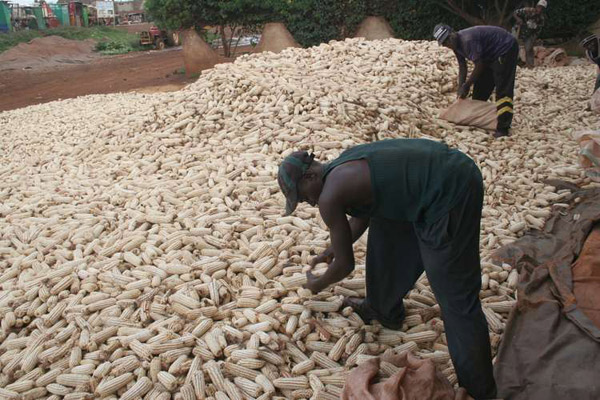By Nita Karume :
In 2017, a total of US $1.5Bn in food quantities went to waste. In a report by the National Bureau of Statistics (KNBS), farmers lost earnings in the entire post-harvest processes. This is inclusive of transportation of the produce to the market. The report goes on to compute a total loss of over 1.9 million tonnes of food. Meanwhile, millions of Kenyans were grappling with starvation fuelled by debilitating drought.
Maize, was singled out as the hardest hit among the produce, with farmers losing a record US 294m. The crop, which is also Kenya’s staple food was affected in the post-harvest stage attributed to including rodents and poor handling. The harvest was also affected by aflatoxin, a toxin produced by fungi due to exposure to moisture.
Furthermore, experts have likened the six million bags lost during this period to the amount Kenya gets from the short rains of September to December. Consequently, Kenya was forced to import maize worth US $418m.
Tonnes of green bananas were also lost on account of weevil invasion, costing farmers over US $238m in yearly losses. Unfortunately the situation only grew worse, with the food security situation in the country dropping into a 10-year low.
Other computed losses as recorded in the 2018 Economic Survey released last week, includes US $196m in Irish potatoes, US $123m in milk, US $114m in beans, US $55 in bananas, US$ 34m in sweet potatoes, US $23m in tomatoes and pineapples, US $18m and $15m in sorghum and millet respectively.
According to a research fellow at Tegemeo Institute, Dr.Timothy Njagi, the problem mainly stems from wastage by consumers who buy more food than they need. This is besides the obvious postharvest losses incurred, which have been estimated to be at 20%.
On the other hand, President Kenyatta recently introduced the Big Four agenda. Through this, the state hopes to cut the post-harvest losses to 15% by 2022. Furthermore, according to media reports, the president is currently considering to introduce a waiver on costly cereal drying equipment, hematic bags, grain cocoons/silos, and feed.
Dr. Njagi also said that the government is planning to transform the Strategic Food Reserve. This, he said, is through the promotion of investments in post-harvest handling through public private partnerships. He further added that the government will also look into contracting farmers as well as other commercial off-takers. This has also stated by the National Treasury in the Budget Policy Statement for 2018.
Aquculture, another casualty of post-harvest losses, has also been roped into the Government’s development agenda. As such, the government is looking to establish commercialized feedlots for fish and offering incentives for post-harvest technologies.
Some of the losses, for example in grains, has been attributed to the methods used during harvesting. Dr. Njagi said that the log and thrash harvesting technique only acts as a huge disadvantage to the farmers. This is because the grains tend to be rejected in the market as a result of impurities. As a result, the farmers end up incurring huge losses. He further added that these farmers should be provided with optimum storage facilities for their produce. This will prevent panic selling among the farmers and in turn help them manage their produce sales.
Other preventable measures include proper storage and transportation on the part of farmers. This, according to Dr. Njagi, should be addressed by the government in a bid not only to avoid losses, but also to mitigate said wastage.









